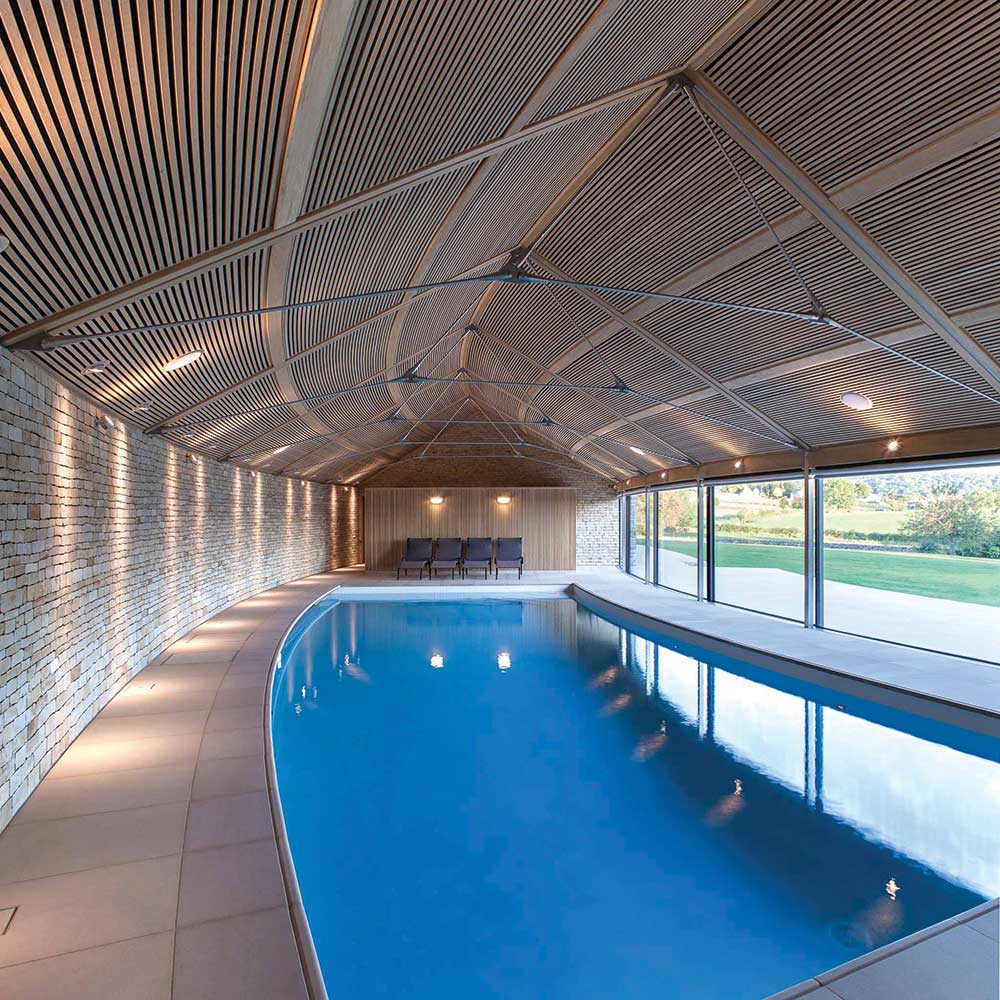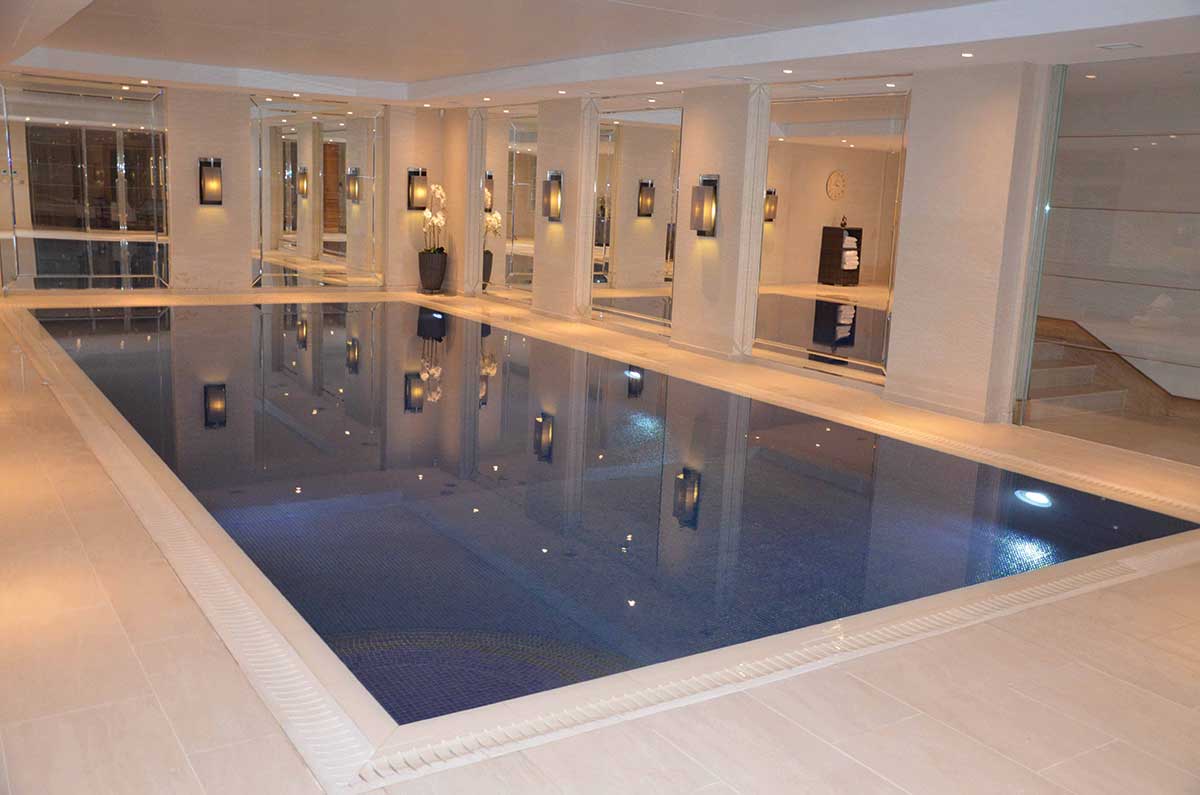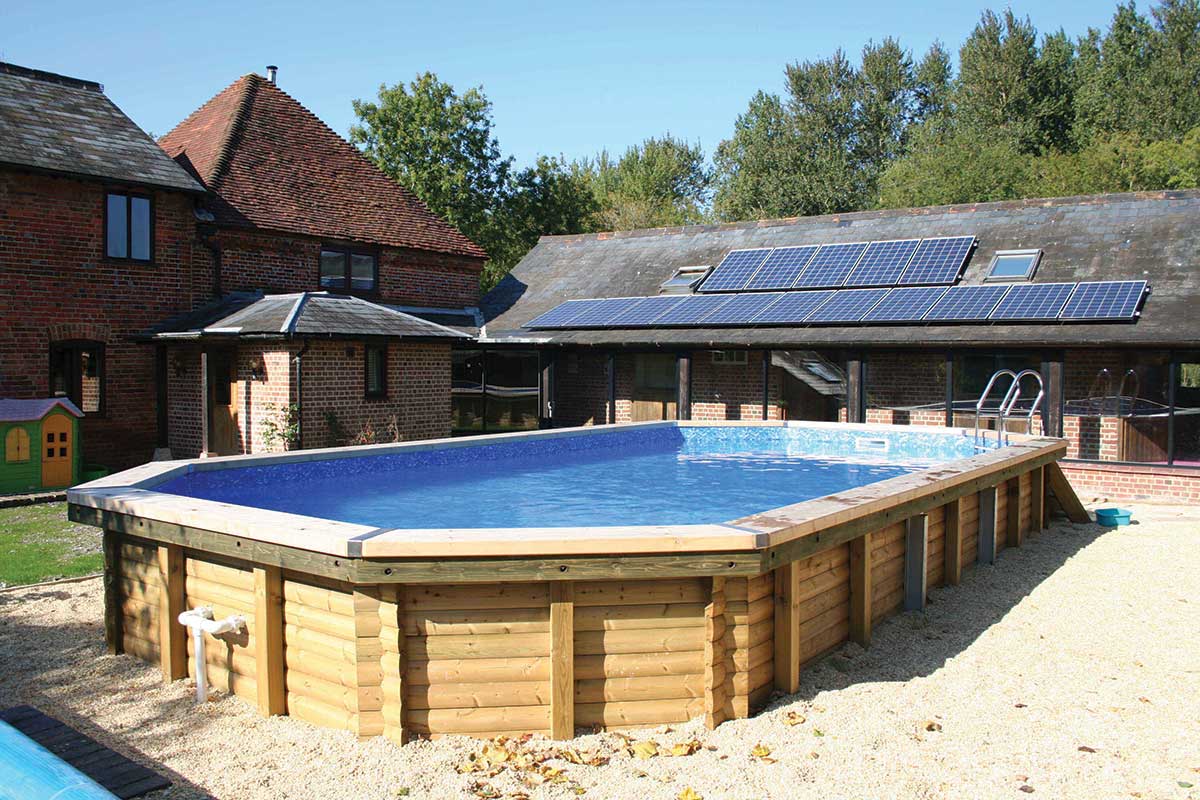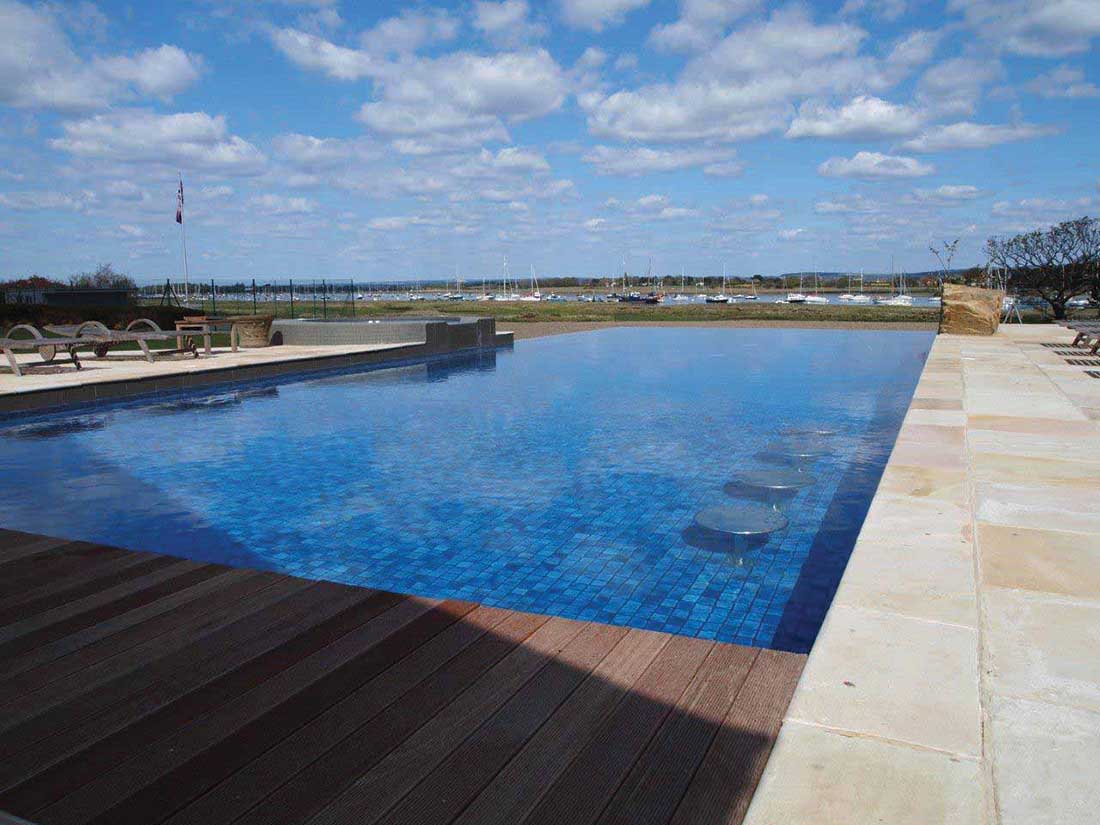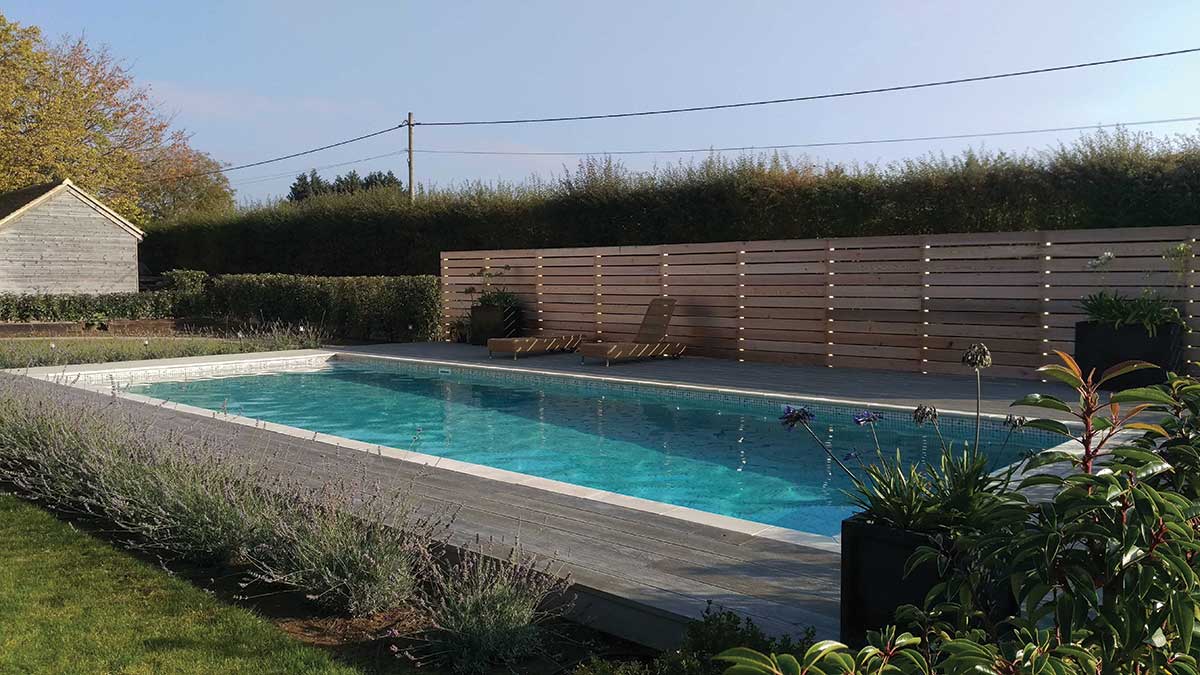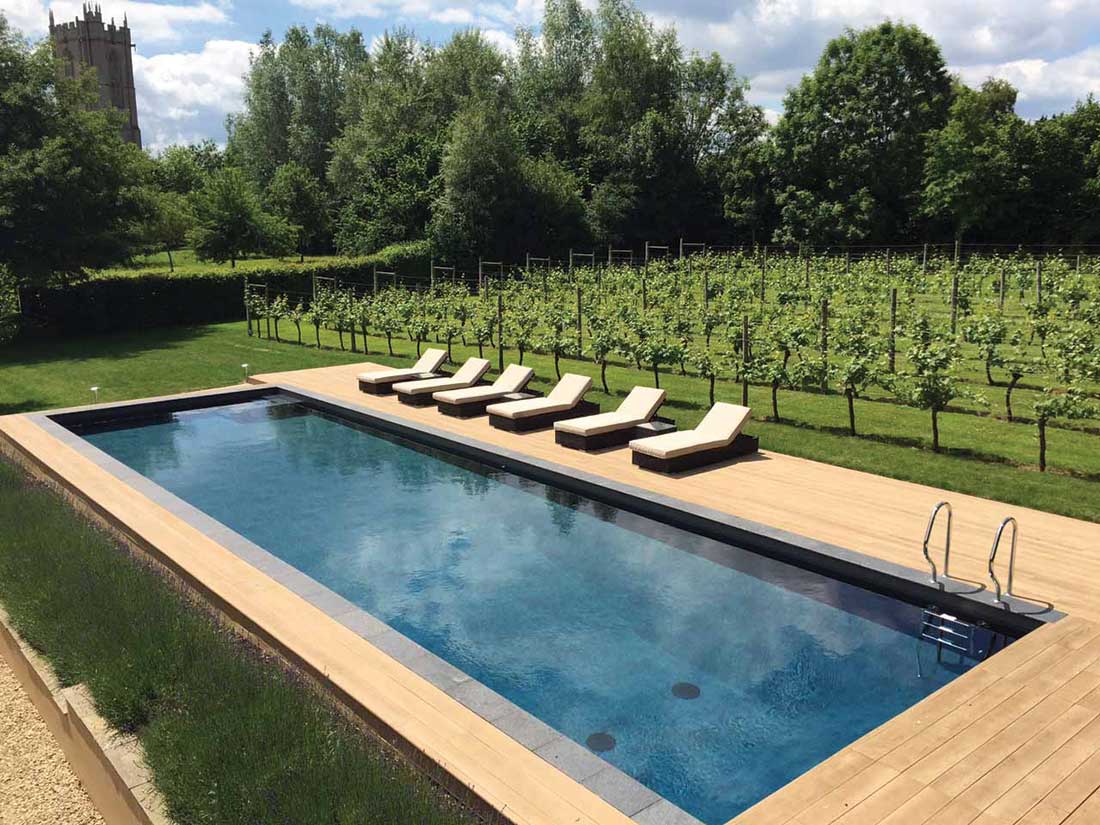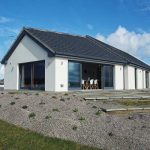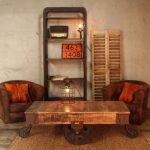When building your dream home you’re likely to include some form of water therapy, be it a rainfall shower or a luxurious bath. But why not consider a swimming pool, hot tub or something in between to make the most of the healing qualities of water?
In this article we cover:
- Indoor versus outdoor swimming pools
- Types of swimming pools from GRP to sprayed concrete and how to finish them
- Pool enclosures
- How to heat the water and control moisture
- How swimming pools are made
- Where to put your swimming pool
- Optional extras like lighting
- How to maintain it
- How much you can expect it to cost
- Benefits of water therapy
Water buoyancy relieves pressure on joints and muscles, which is partly why baths are so relaxing. Going a step further is to consider installing a hot tub or swimming pool, but before you take the plunge get acquainted with some basic facts about design and construction, as well as the type and degree of maintenance involved.
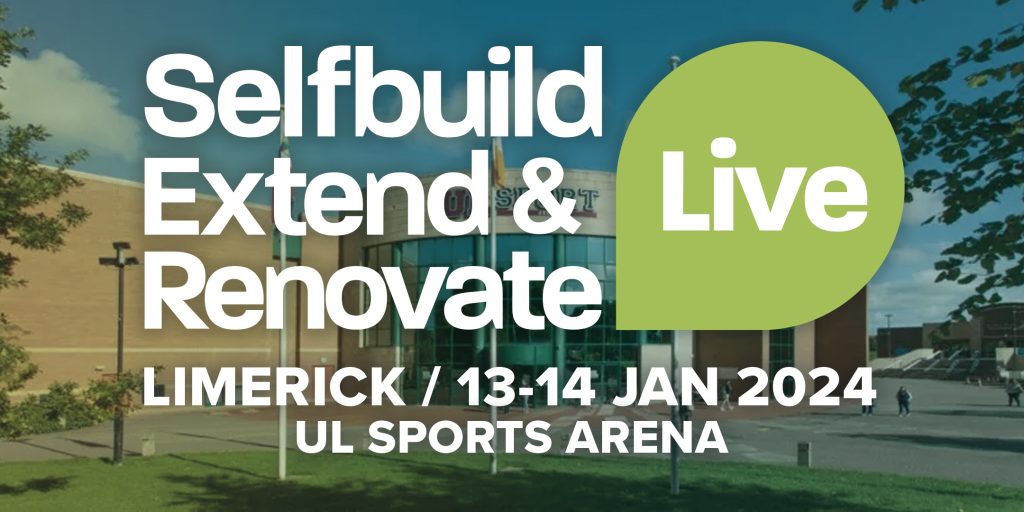
FREE Tickets to Selfbuild, Extend & Renovate Limerick 2024
Selfbuild, Extend & Renovate Live is coming in Limerick. Showcasing over 85 local exhibitors, 2 theatres, 1-2-1 advice and much much more. Ideal for your home project.
Remember, before making your final decision, take advice from an experienced and independent contractor or designer. When researching specialist designers, make sure they can undertake the tasks that they are being required to do and always ask for references. If possible, go and visit their projects to see at first-hand the quality of their work and to get feedback from the client on how well their installation went.
Indoor or outdoor swimming pool?
The first consideration will be whether you go for an indoor or outdoor pool. While an indoor pool can cost twice as much as an outdoor one, in large part due to the need to essentially build an extension to your house, in Ireland you will only realistically get about half a year’s worth of enjoyment out of an outdoor pool, from May to October. That said, you can extend the season by building an enclosure around it and heating the water.
A big drawback to an indoor pool is the very fact that it doesn’t benefit from being out in the open; to get the best of both worlds you could consider installing a retractable roof mechanism (this is possible for outdoor pool enclosures too).
Other points to note include the fact that the surface area needed to construct an indoor pool is greater because you have to take into account space for a plant room to house the heating, ventilation and filtration systems, somewhere to walk / lounge around the pool and also changing room and toilet facilities.
An indoor pool complete with new building, or adding a swimming pool to an existing room, will take up to six months to complete. You can buy pools that are manufactured and installed as a single component, so if you have an existing room, you will need to demolish one entire exterior wall for the pool to be installed in the building.
Typical pool sizes are 8m x 4m and 10m x 5m, and if you use the budget options, such as wall-mounted dehumidifiers, built-in insulation instead of heating, and a DIY kit, you could probably get your pool cost to £60,000/€70,000, including the pool building. Building an outdoor pool costs upwards of £29,000/€35,000, this also depends on the design and extras you add.
Outdoor pools can take from a few weeks to a few months to complete, depending on the size, the options you choose to heat it with, and the state of the ground in which you are either installing or constructing it in. If you are installing a pool in summer and can’t wait to use it, an outdoor pool is therefore your quickest option. Outdoor pools may provide more social activity because you have the entire surrounding garden space where you can entertain.
Whether your pool is indoor or outdoor make sure it benefits from maximum exposure to sunlight, avoiding trees and other foliage which could overshadow the pool or shed leaves and other debris into it. Also don’t build the pool too far from your house – a lengthy cross-garden trek can detract from the experience. It’s also handy to be able to use a downstairs shower room in the house for changing, thus saving on the cost of one outside. Considering how quickly children grow up, in terms of size pool manufacturers advise going for the largest possible option within your budget and practical requirements. If the pool is more for exercise then you could go for a smaller pool with a counter current.
Types of swimming pools
Sprayed concrete: Wet concrete is sprayed onto a preformed cage of reinforced steel. This is quite a quick method and has the advantage that the concrete can be pumped over a distance should the site access be restricted. It has the longest life expectancy and is especially suited to an indoor pool.
Shuttered concrete: After pouring a floor slab, the pool walls are poured between retaining panels or shuttering, providing a good base for the internal finish. Used for rectangles and simple shapes, it requires less specialised plant and equipment than sprayed concrete.
Reinforced blockwork: Suitable for smaller, rectangular pools where the depth does not exceed two metres, the pool walls are made from hollow concrete blocks which are then filled with steel reinforcing rods and poured concrete.
Unreinforced blockwork: Best for small pools with a depth not exceeding one metre. The pool is finished with a waterproof pvc liner. It’s not possible to tile pools with a pvc liner as the structure must remain flexible to accommodate minor structural movement and changes to the water table level. Liner pools are, though, very quick to construct – about three to four weeks in total – and the liner should last for seven to ten years.
Prefabricated ceramic / GRP (Glass Reinforced Plastic) Modular pools: Because this pool type is prefabricated, it simply requires a space to be excavated, into which it is then placed and secured. With 95% of the work carried out in the factory, there are savings on time and money in construction and fitting as well as quality control. The one piece, seam-free pool is fitted with all the equipment (skimmers, drains, jets, inlet, underwater light etc.) you specify prior to delivery. You can select the features you want – ledges, steps, shallow areas – for less cost than with concrete and it’s all very quick to install. The whole process of craning into position onto the crushed gravel base, then back filled with more crushed gravel whilst the pool is filled with water and pipework connections made, takes about one week.
Above ground pools: While generally cheaper than in ground pools these are not to be confused with the basic, low cost ‘splasher’ pools. High quality above ground pools are available in a range of shapes and sizes and often suit smaller gardens. Modular in construction they can be put up and taken apart if you move house or the season’s changed. A rigid steel support is set in place and, with all parts pre-assembled, no adhesive bonding or bands are needed. Often supplied complete with their own filtration system, good quality above ground pools provide a choice of optional extras such as access ladders, covers and counter current swim systems to create a bigger feel to a smaller pool.
Finishes
A hard concrete shell will generally be clad with tiles / mosaics or other proprietary finishes, including plaster. Around the pool you will also often find anti-slip tiles or polypropylene cord carpeting – at the end of the summer just roll it up and store until you’re ready for action again! However note that a thorough cleaning regime will be needed for any matting, especially when you next use it after being stored, to avoid the build-up of bacteria from any dirt or debris on it.
Taking cover
In our climate, adding a cover or enclosure over your pool is a sensible option. If you do decide on an open pool, you may want to consider enclosing it in the future, and you should bear this in mind when positioning it in your garden.
Heat retaining covers should be used where possible; however, irregularly shaped pools can sometimes make this difficult, so always check what cover is possible when choosing a pool shape design. Covers can also reduce surface debris (such as insects and leaves).
They range from ones that float on the surface of the water to ones that are stretched across from one side of the pool surround to the other. They can be mechanised or manually rolled out. Also available is a bubble sheet that is laid directly on the water.
All of the above covers have heat retaining qualities, however, unlike the first couple of examples, the last one has no safety feature at all. Therefore, if buying a cover, be sure to check any safety features that may be available to add a layer of safety for small children and/or pets. Consider how easy it is to manoeuvre and in the design of your pool/hot tub area don’t forget about storage for the cover when it is not on the equipment.
Enclosures
Air inflated dome: This is the simplest option, a giant pvc ‘bubble’ inflated by air drawn in from outside. Accessed by either a zip or air lock door (to keep heat in), if the outside air is really cold, the air inside can be heated too. The dome can be put up at the start and finish of the summer if you prefer open air bathing, or used all year round.
Telescopic enclosures: These offer more variations than the dome because they are built in sections that can be removed without taking down the whole structure which can be either permanent or mobile. Made of polycarbonate panels on an aluminium frame, side walls slide up or roof panels roll back.
Log cabins/timber frame: The appeal of wood is hard to beat, especially when it combines other features such as a high standard of insulation (resulting in minimal condensation), as well as acoustic insulation. They are quick to construct, may not require planning permission (you should check this), and finally will last for years if built using preservative treated timber, and the interior kept well ventilated.
Hot water
The cost of heating the water is directly related to both its surface area/volume, whether the pool is inside or out, the quality of the covering placed on it when not in use and the efficiency of the heating system. Most of the heat lost from the pool will be though evaporation (70%) so fitting an impervious membrane cover is essential. Heat lost through the surrounding earth represents about 20% (insulated lining is available to reduce this).
Free heat from solar panels or a heat pump system certainly reduces running costs but the capital expenditure may take some time to recoup. Using your domestic heating system, especially if the pool is not too large, may be less of a strain on your budget but the system needs to be large enough to accommodate this additional requirement.
Moisture control
Know that if the pool or hot tub is indoors, a mechanised ventilation system will be required to deal with the humidity. Make sure a detailed study of your particular requirements is done by a specialist engineer to specify the correct units and their size. As with your heating system, you may be able to use the extraction system that was installed in your house but you will need to check with your engineer.
Hot tubs
If you prefer to own something smaller, consider a small body of heated water, otherwise known as a hot tub (and also sometimes referred to as a spa). There are additional health benefits to using a hot tub; heat causes blood vessels to dilate and increase circulation, massages from the jets loosen tight muscles and stimulate the release of endorphins, which are natural stress reducers, and the list goes on. But note that it is not advisable for pregnant women or people with medical conditions that may be aggravated to use a hot tub without taking medical advice.
There are different types of hot tubs available, some are fitted with massaging water jets for a hydrotherapeutic effect while others are even big enough to exercise in (counter current jets allow you to swim) and there may be areas for rowing, running, etc.) and these are often called swim spas or exercise spas. However their water temperature tends to be much lower than that of a typical hot tub.
Despite our weather these are mostly used outdoors, but in sheltered areas (e.g. gazebo) for protection from the elements and from prying eyes.
Early models from the 1970s were mostly wooden, nowadays one-piece acrylic hot tubs are dominant. Not only are they less expensive to manufacture, they’re also easier to install and more energy efficient. As their name suggests, they are made from a mould with seat shapes, each one of which is often equipped with one or more water jets for different parts of the body. The water flow may be aerated for additional effect and some or all of the jets may also automatically move or rotate, creating a sense of being massaged.
How it’s made
The shell is made in one of two ways. At the more expensive end are acrylic shells which have a longer life. They are made by placing a sheet of acrylic over a mould and applying heat from an overhead heater to create the form. The second method results in a polythene shell when an aluminium mould is filled with polythene powder, the mould is heated and spun in a large oven which melts the plastic.
The next stage is to add insulation to reduce running costs (the operating temperature of hot tubs is often between 35 to 40 degC) so adjusting the temperature within this range will potentially help to retain as much heat as possible and also save money! When purchasing, make sure to check the time it takes to reach this temperature.
Covers reduce losses through evaporation, which like pools account for about 70% of the total heat loss. Standard covers are tapered and 50 to 75 mm (2 to 3 inch) thick but you can get 75 to 100mm (3 to 4 inches) ones too. A bubble cover lying on top of the water and underneath the main insulating cover is particularly effective. Prices generally start around €4,000 to €5,000/£3,500 to £4,500.
Location, location
Hot tubs are heavy – the smaller models generally weigh 300kg and hold 1,000 litres (1 cubic metre of water) which is the equivalent of a tonne. Add to that the weight of the bodies and you need somewhere strong enough to support it all. Find your ideal spot and consider whether the model will fit and what supports are available. If you’re building a new house and especially if you are locating the hot tub indoors, make sure this weight is factored into your structural calculations.
Also make sure it will be easy to service; ask your installer where the technician will require access in case a component fails and make provisions for this. Then you need to consider the electrical requirements; for energy efficient models you will need a 16 amp cable but larger installations require a heavier cable carrying 30-50amps from the meter, both of which should be fitted with an RCD (residual current device) and only be installed by a qualified contractor. It is your responsibility to have these in place prior to installation which usually takes between four and six hours.
To reduce energy costs consider the amount of time it takes to filter all of the water and whether the motor’s waste heat is used to warm up the water. Also look for models that use low-amperage filtration pumps.
Functionalities
Coloured lighting, integrated sound systems (made with marine grade components to cope with the moisture), and flat panel TVs are now all widely available. Models with remote controls allow you to both adjust the water temperature and operate a music system.
Water is delivered to the jets under pressure; cluster jets deliver a very strong, pinpoint massage, smaller spinning jets release a swift and powerful vortex of water, and multi-port air injectors are bubble machines that fill the spa with millions of little air balls that bubble and burst, adding a visible and audible sensation to the water.
Within the tub are water jets which deliver water drawn from it out through the filters and pumps and return it through the jets.
There may also be air jets operated by a blower. As the external air is released, the water temperature is inclined to fall slightly. You may therefore need a larger heating unit and allow time for the water to return to temperature. Hot air warmers are also available.
Last but definitely not least, make sure that before you buy you carry out a ‘wet test’. Learn what the jets feel like, how they work, which ones come as standard and which are extra. More jets aren’t always better; rather check to see they’re well positioned for you. Also make sure the seats are comfortable/ergonomic.
Pool maintenance
The trick with pool maintenance is to do ‘little but often’ with perhaps only 10-20 minutes per day with an additional 20-30 minutes each week in the summer. This includes clearing the pool from debris, checking filters and adding chemicals when necessary after having checked pH, ensuring that any safety devices are properly removed from the pool (when it is in use) and then properly returned to the pool when not in use. Off-season, a properly prepared pool may only need a monthly check.
Hot tubs also require daily maintenance when in use. Bacteria love damp, warm areas and despite filtration, one bacterium, mycobacterium avium, has a particular liking for hot tubs that are not cleaned thoroughly.
pH Keeping the water crystal clear as well as the calcium hardness (the potential cause of severe problems with the water chemistry, which may cause metal parts of the plumbing to corrode) within acceptable margins depends upon the pH. A test kit will be supplied with your hot tub/pool and you should ideally check the water every day to see if you need to treat it.
Refresh Pool manufacturers say that as long as you keep the water chemistry right you will only need to empty the contents for major repair work. Hot tubs will however require the water to be changed regularly, check with your installer as to what this entails.
Filters Hot tubs and pools have in-built water management systems designed to destroy bacteria, viruses, mould and mildew, while simultaneously oxidising dirt, contaminants and body oils. Chlorine is a chemical added in the form of tablets in the filtration system to kill bacteria, while ozonisation, ionisation and saltwater bromine systems are add-ons that neutralise contaminants. You will need to remove debris such as leaves and dirt manually and check the filters at least once a week.
While not necessarily the most environmental option, considering the amount of water, energy and chemicals required to use your swimming pool or hot tub, adding one to your family life will add fun, relaxation and if located indoors, year-round therapeutic enjoyment.
Additional Information:
SPATA (the Swimming Pool and Allied Trades Association)
www.spata.co.uk or phone 01264 356210 and BISHTA (the British and Irish Spa and Hot Tub Association) www.bishta.co.uk or phone
01264 356211.
Try our new ‘Selfbuild Cost Calculator’. Fill in details and instantly get a rough estimate for your project






